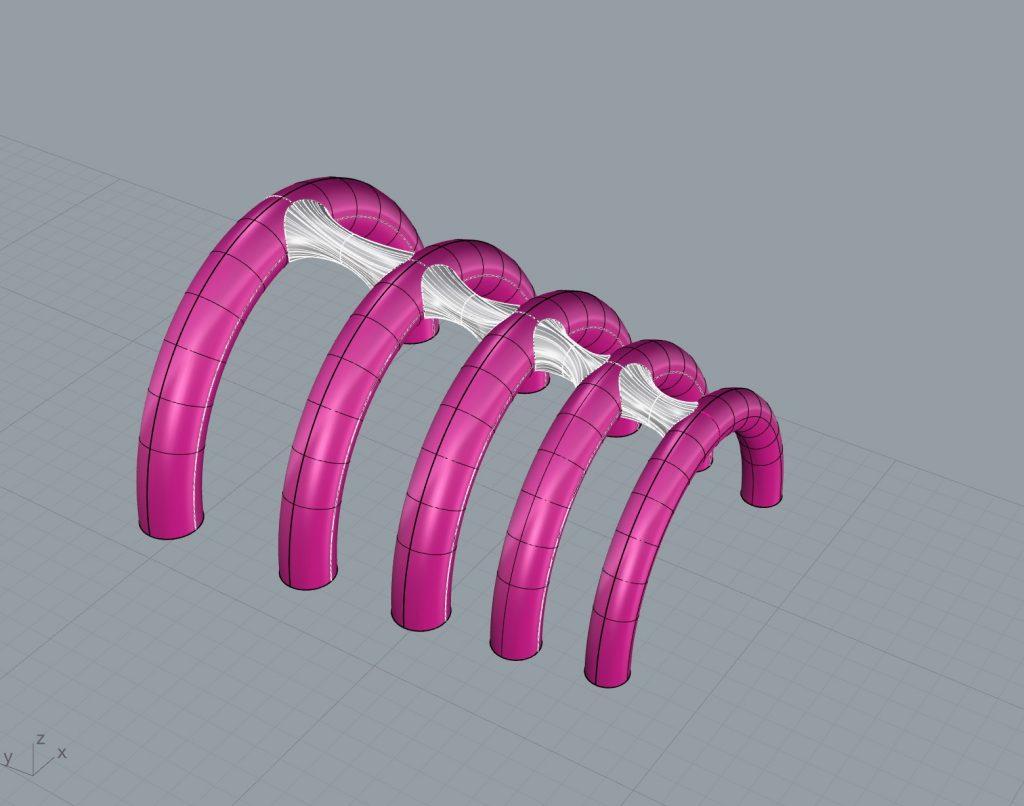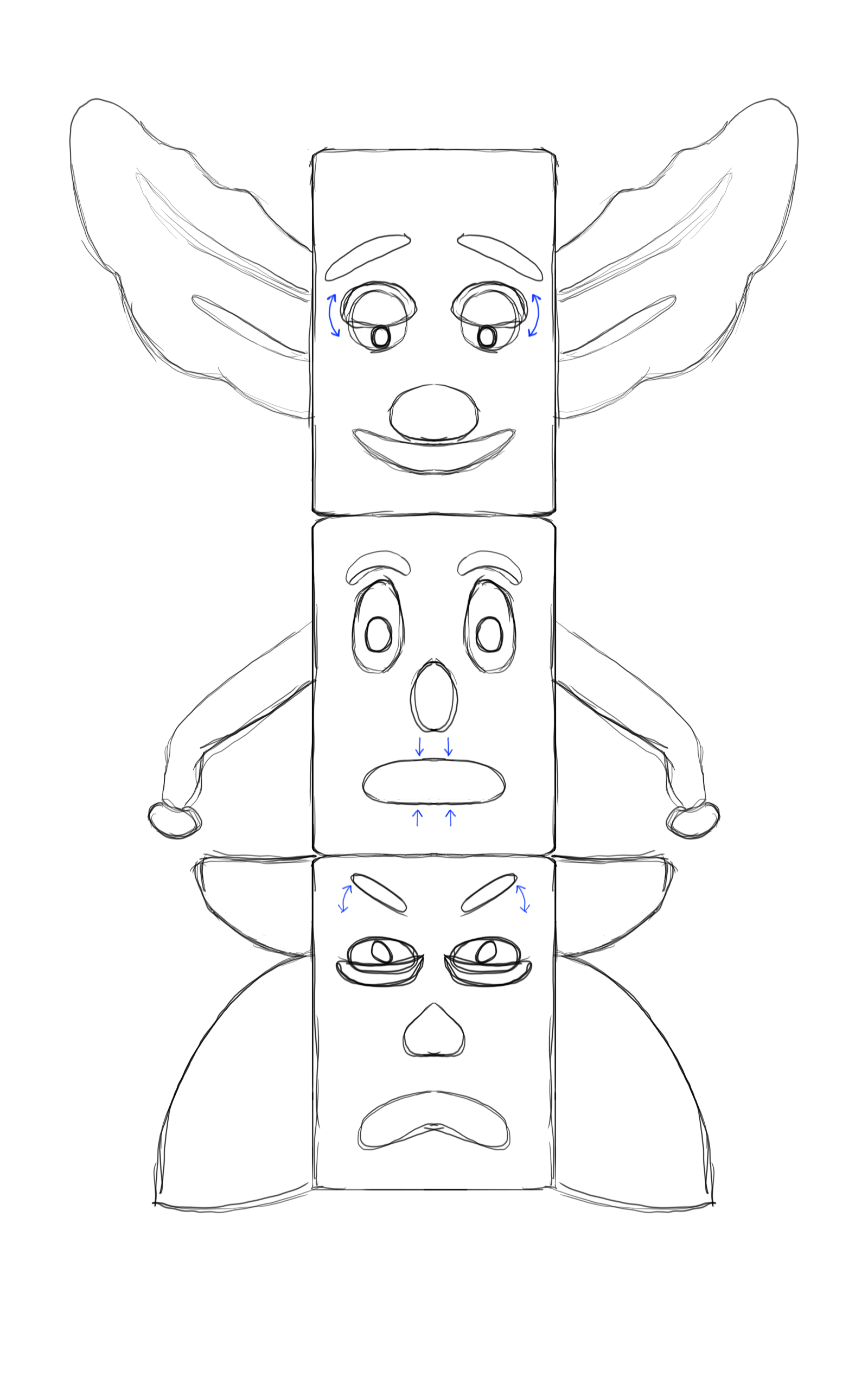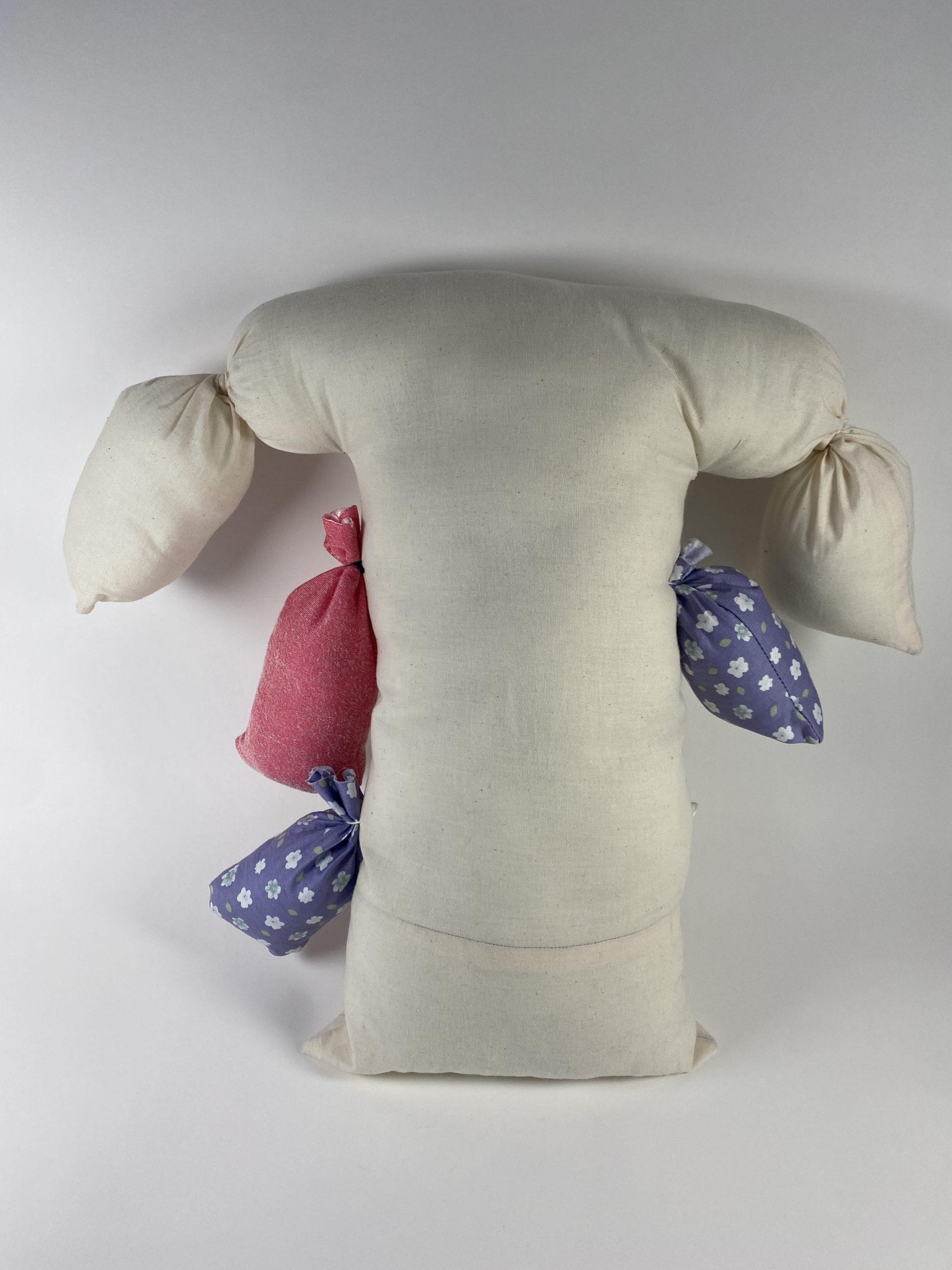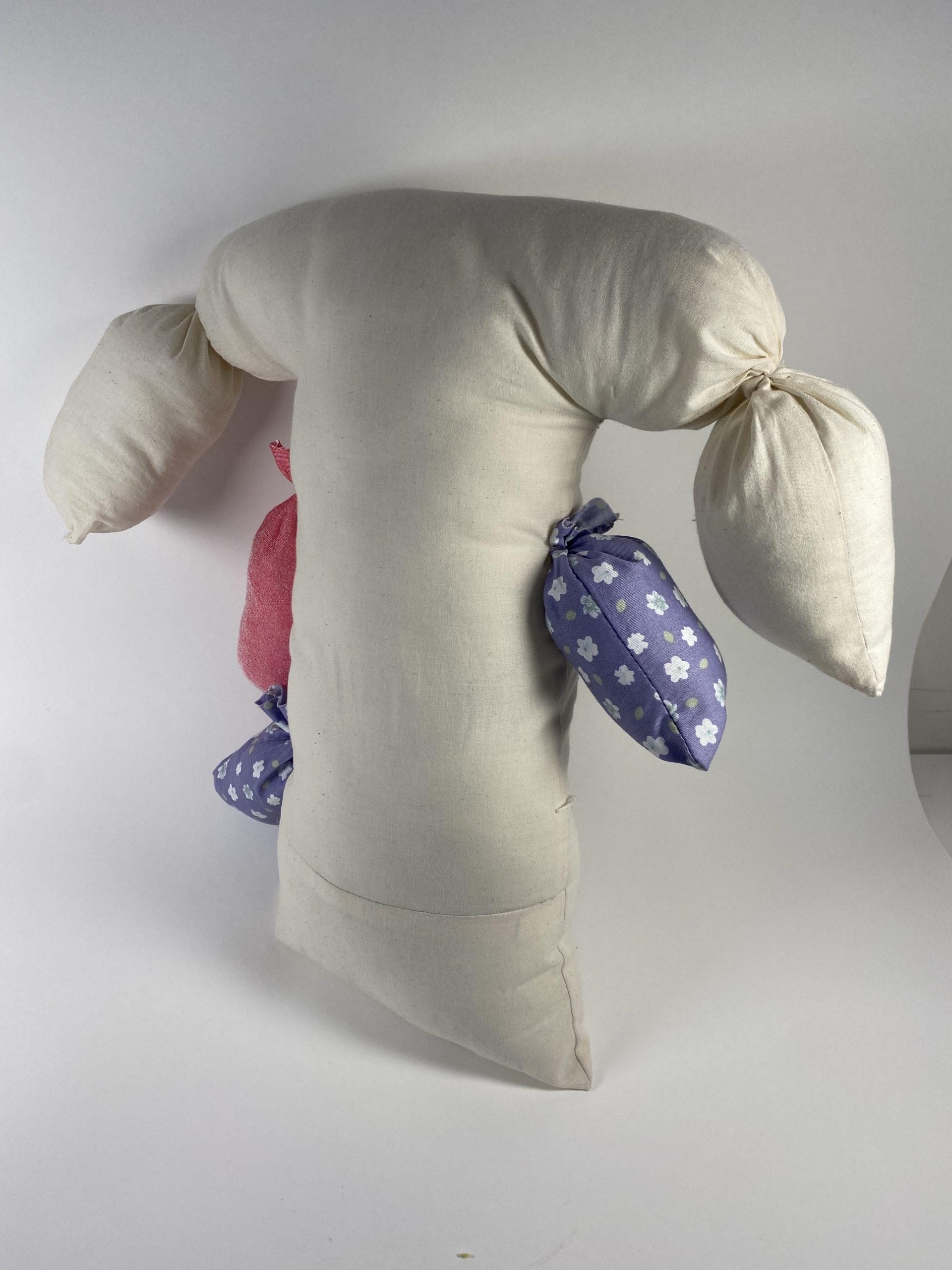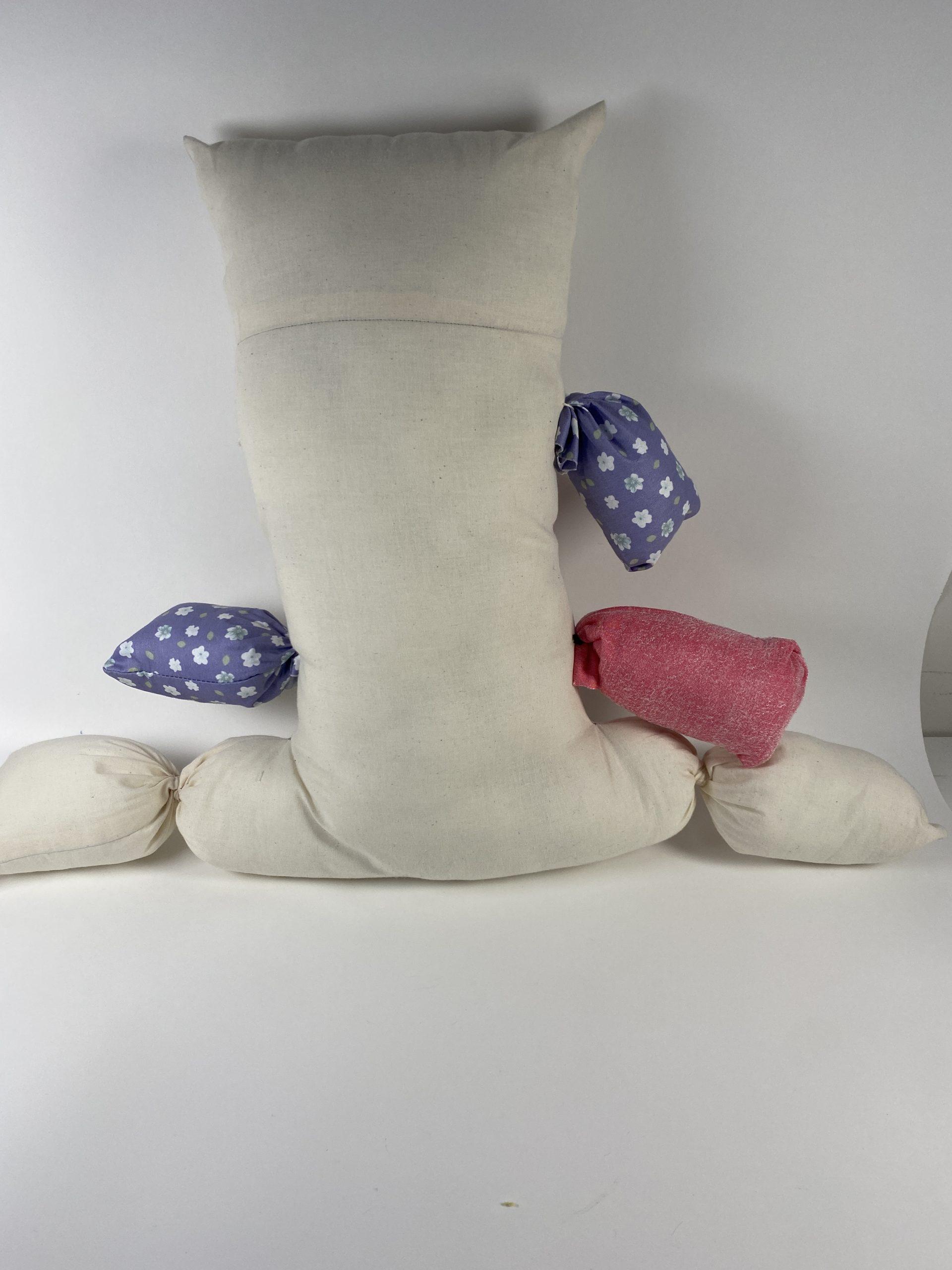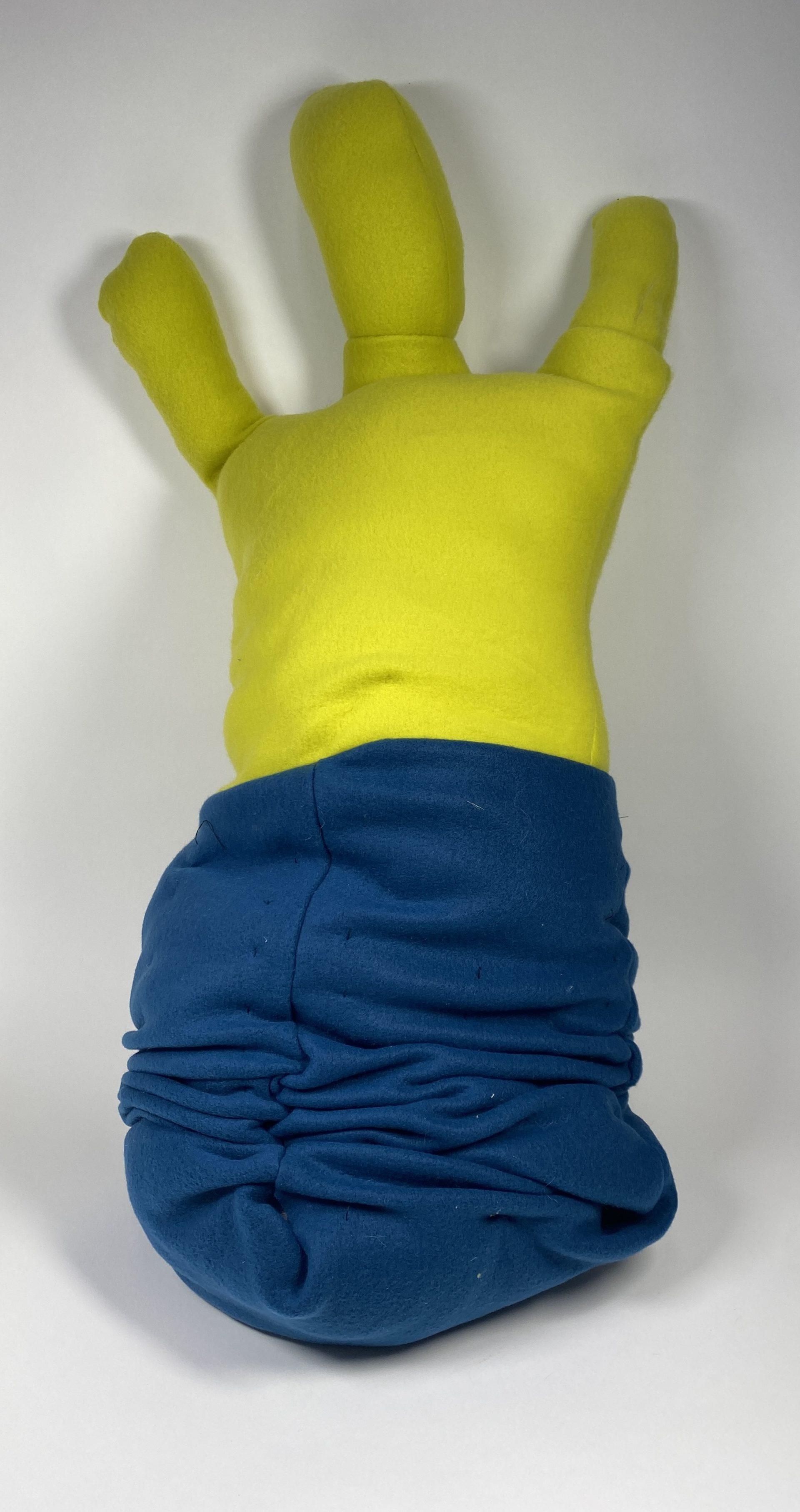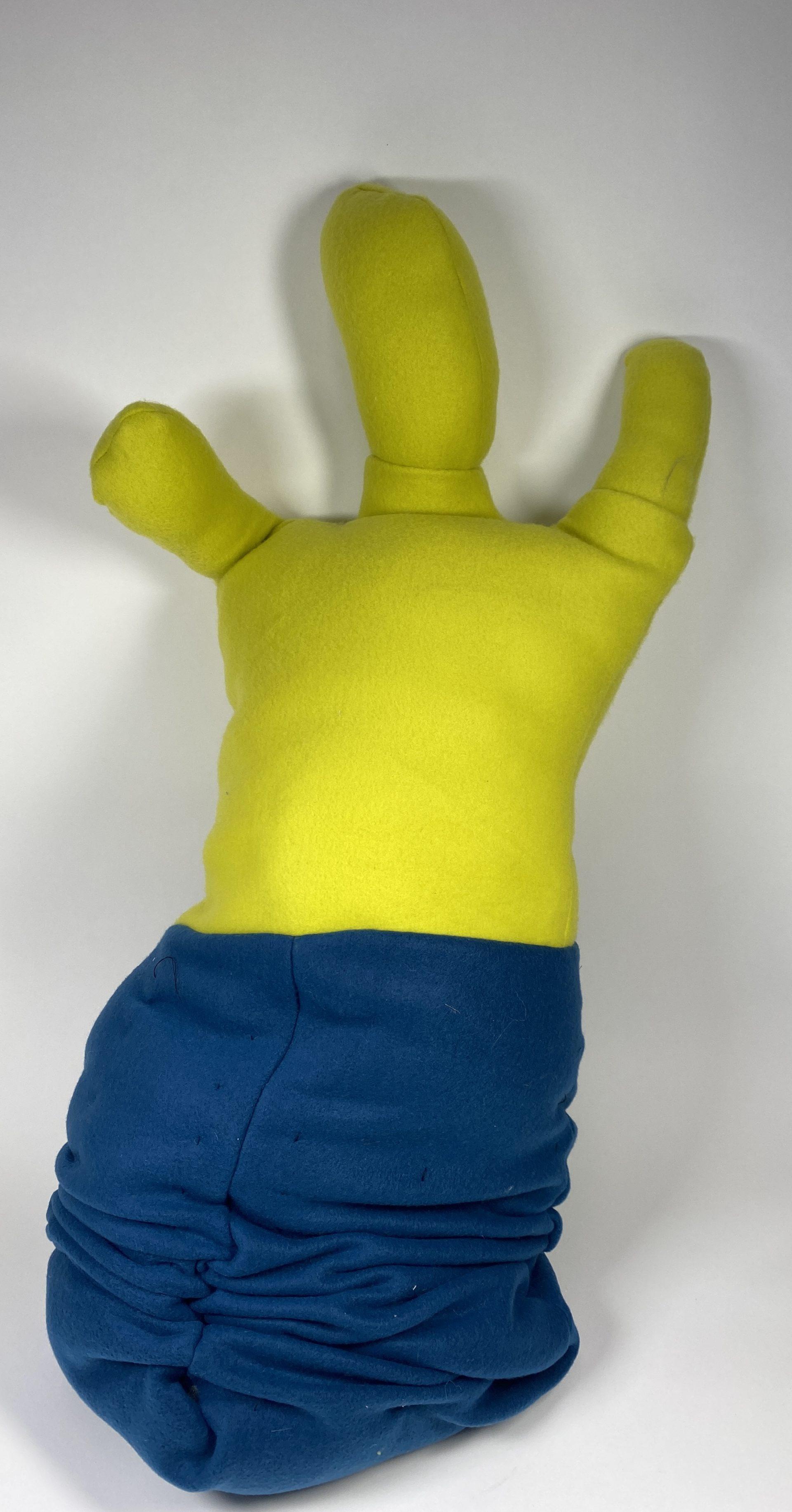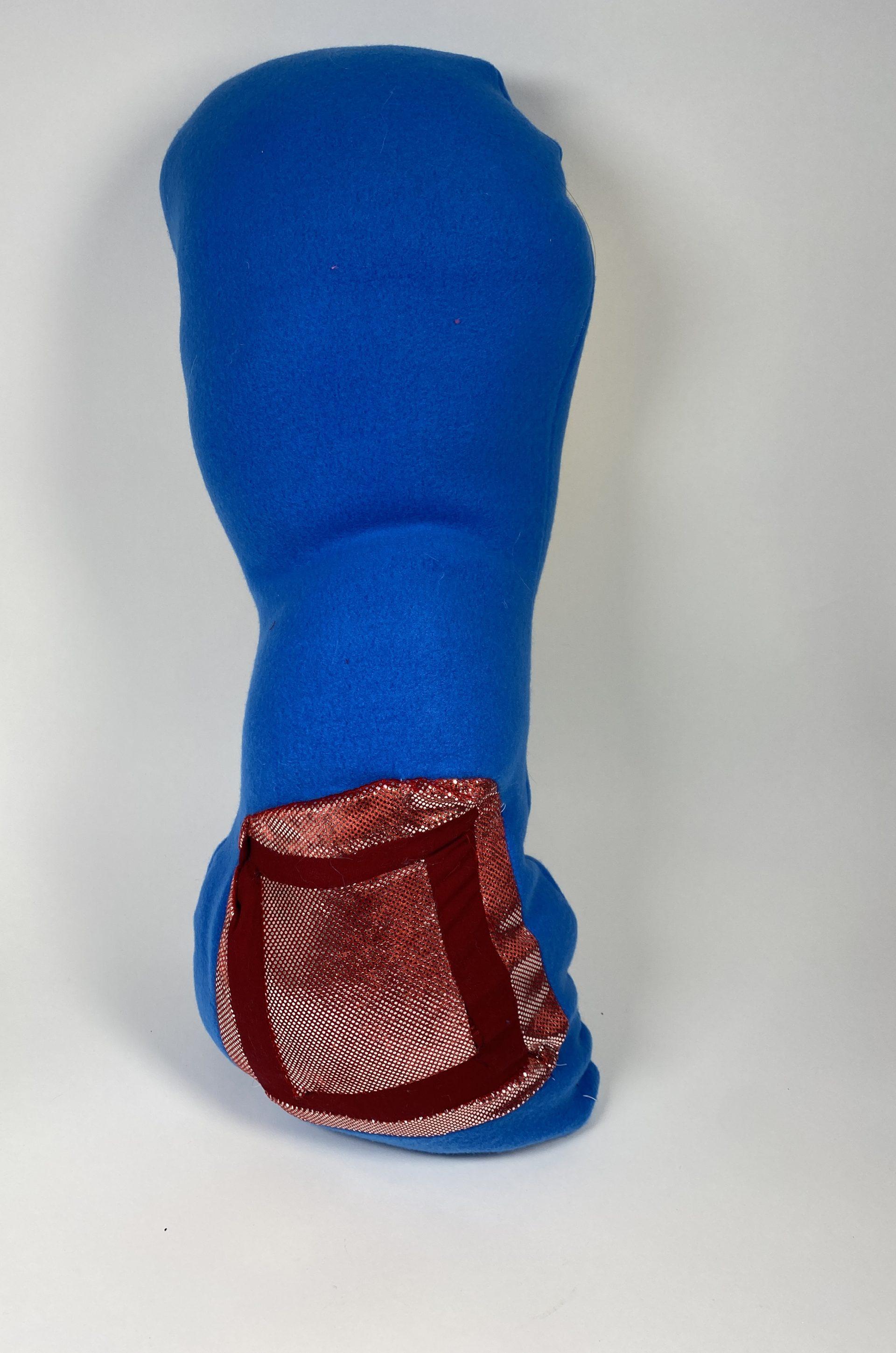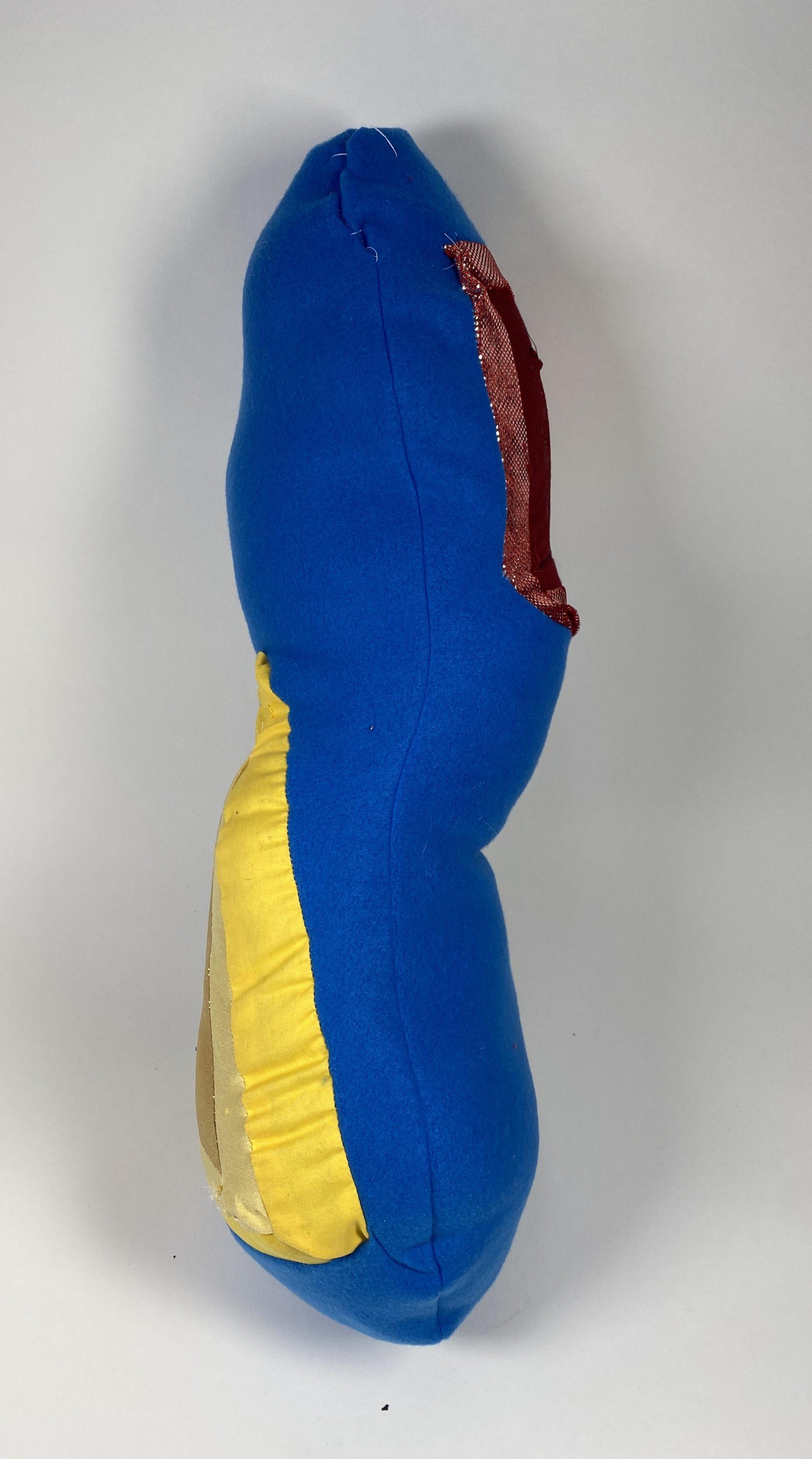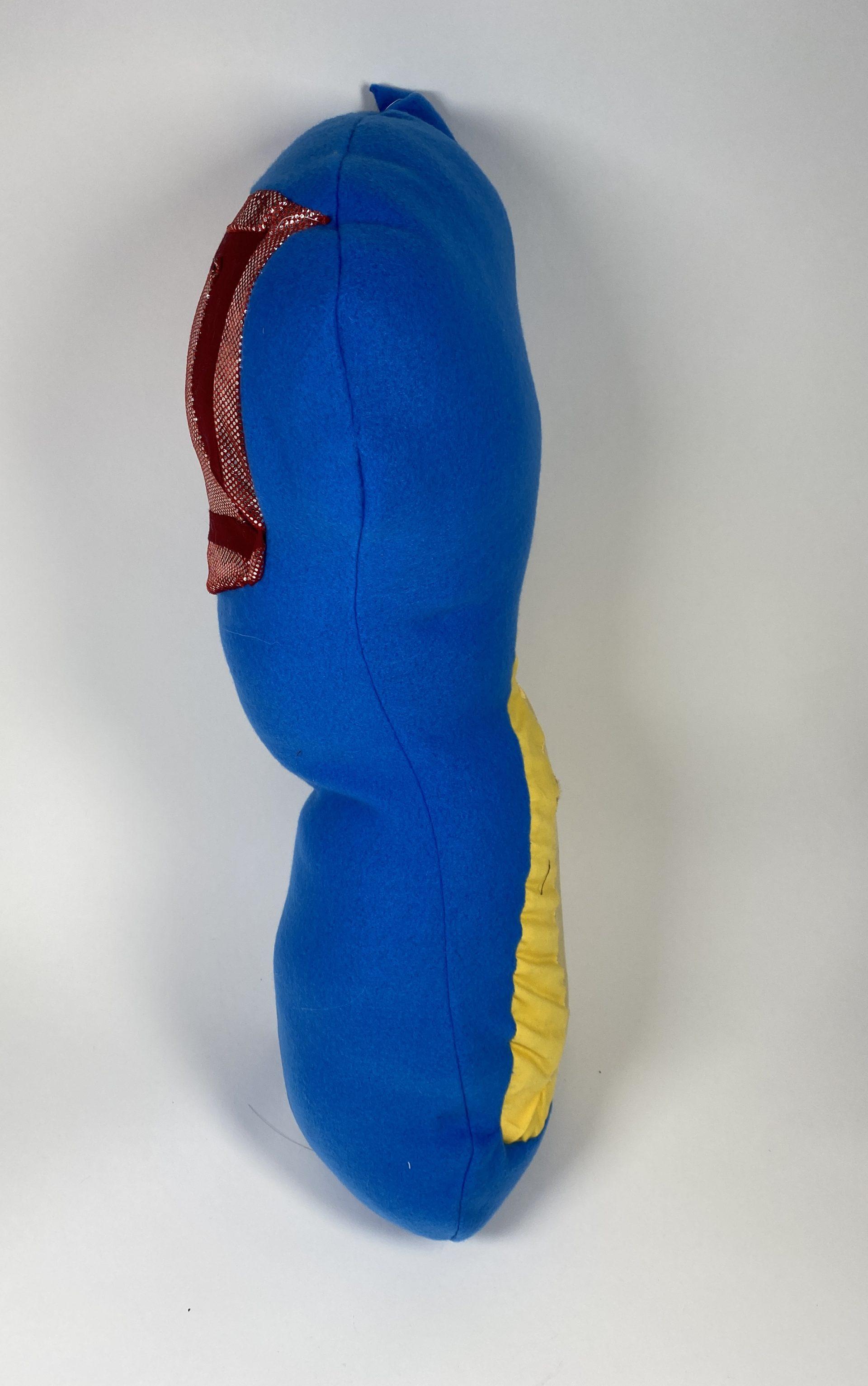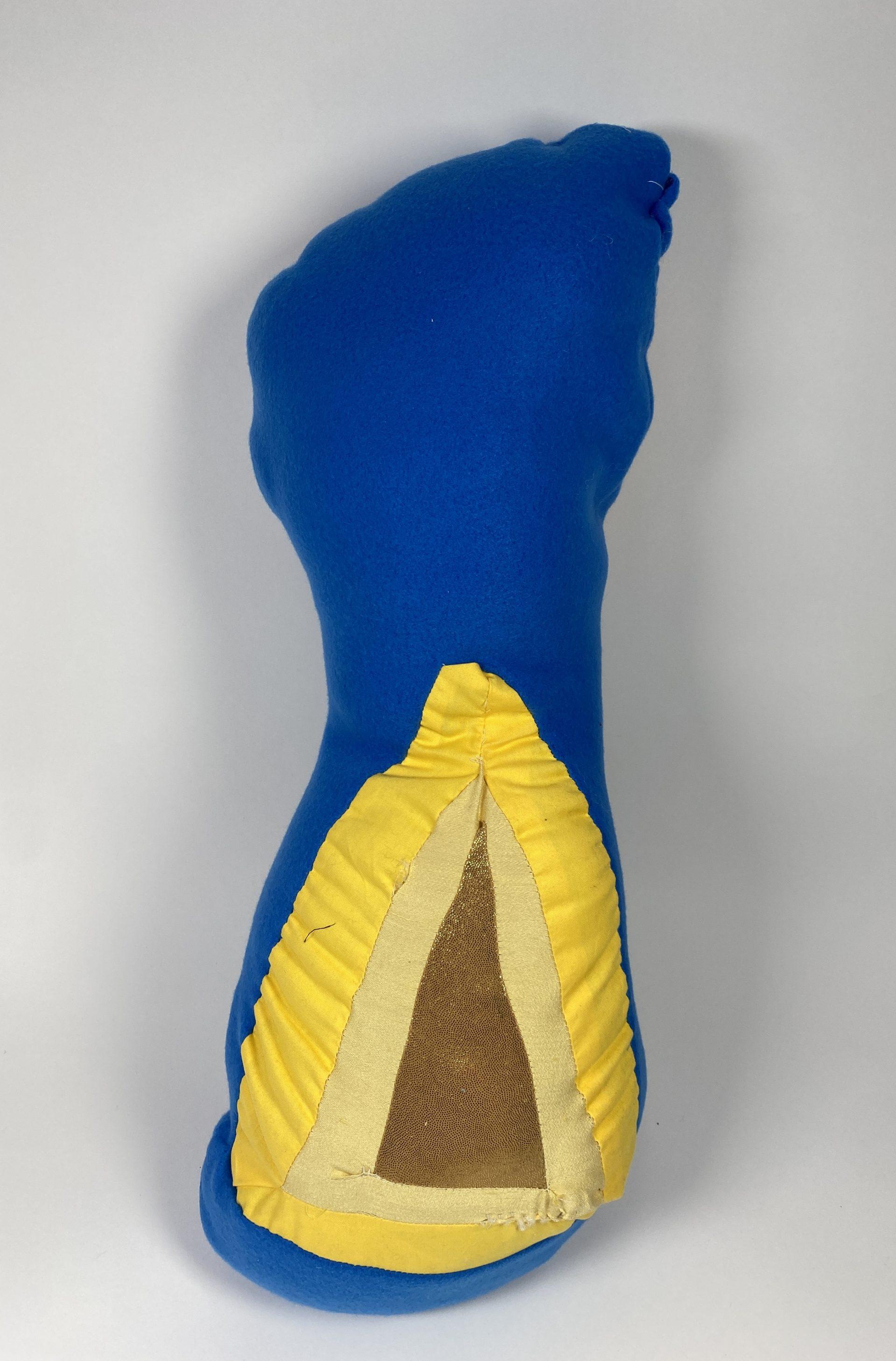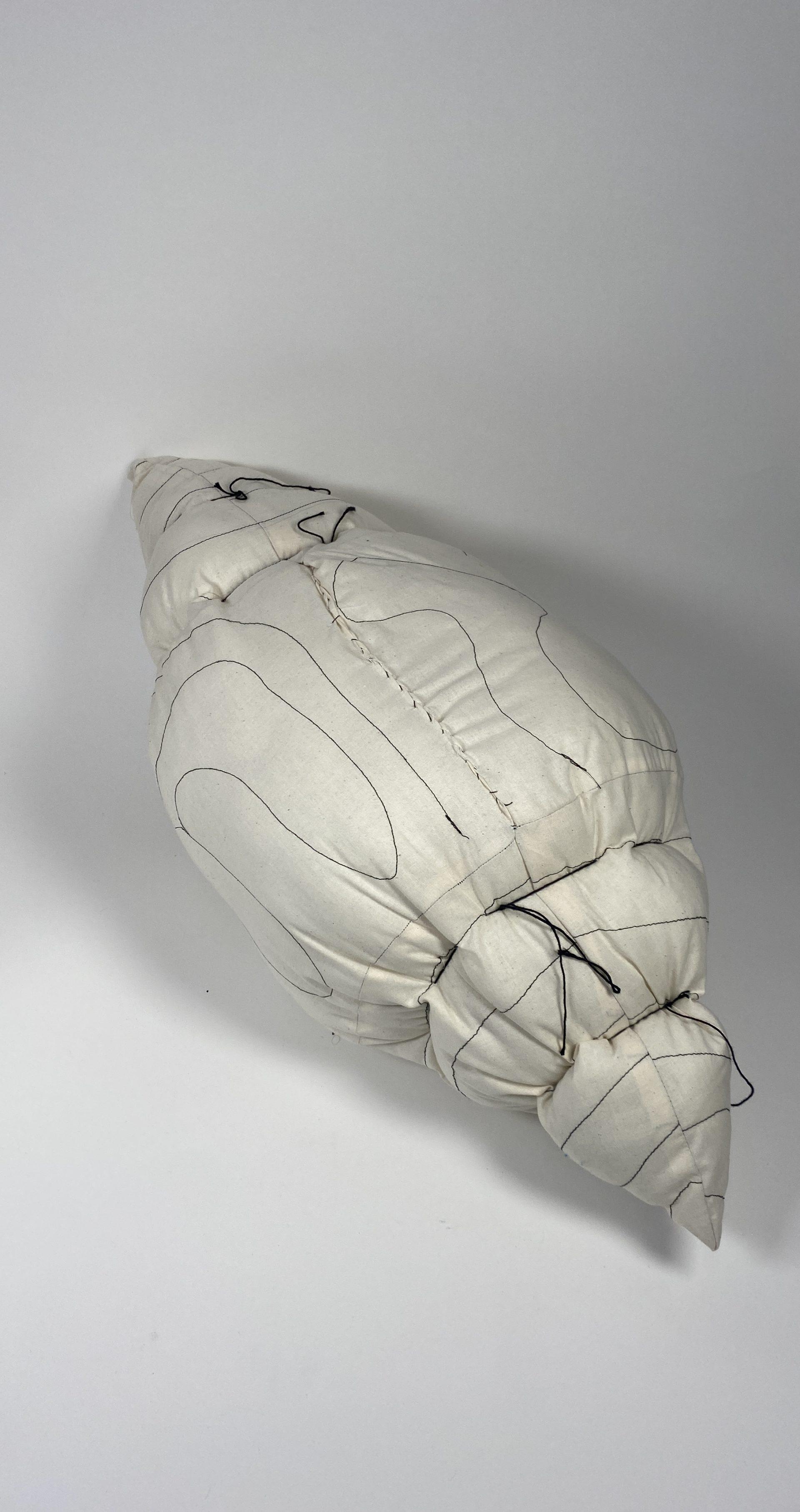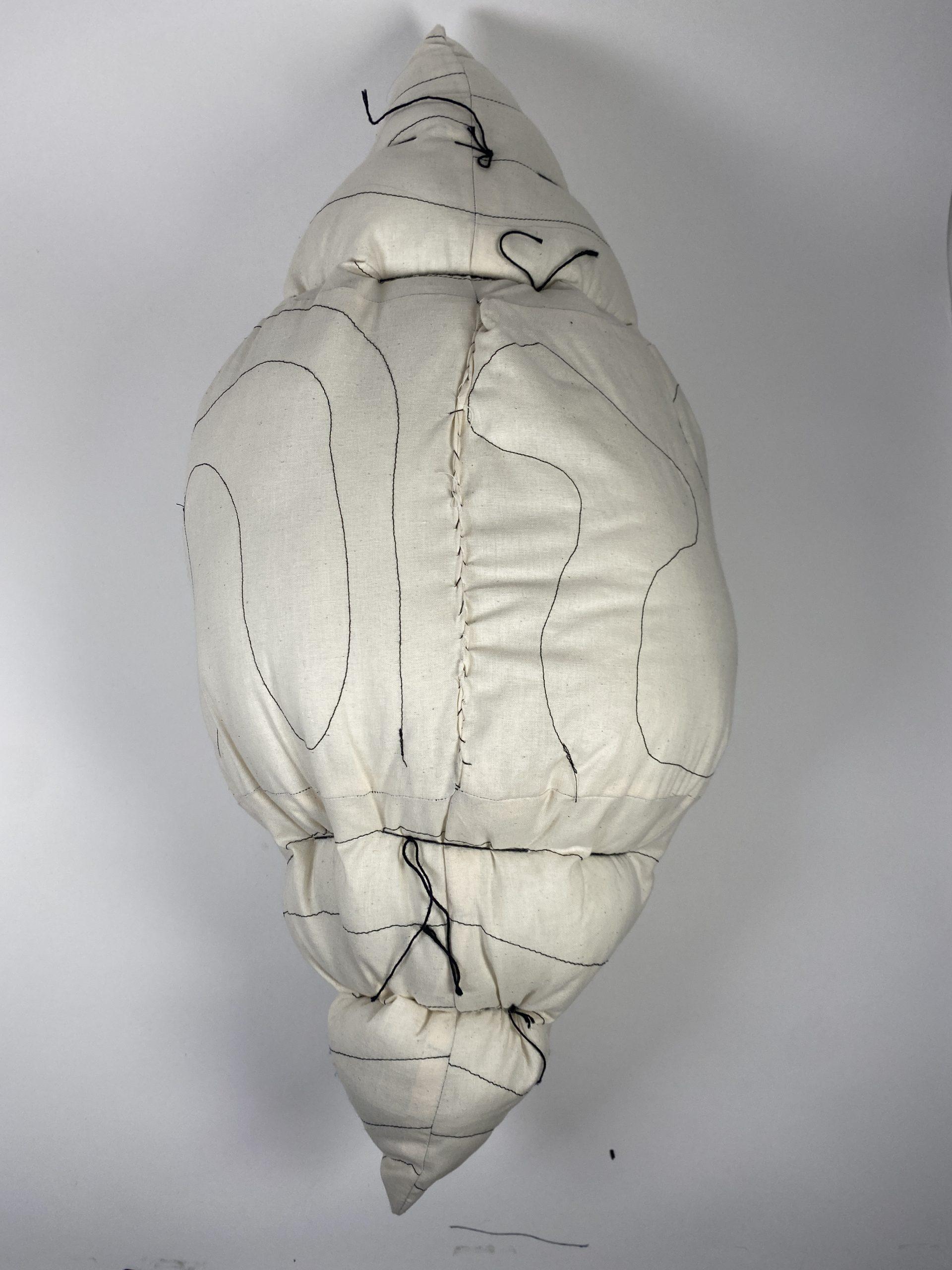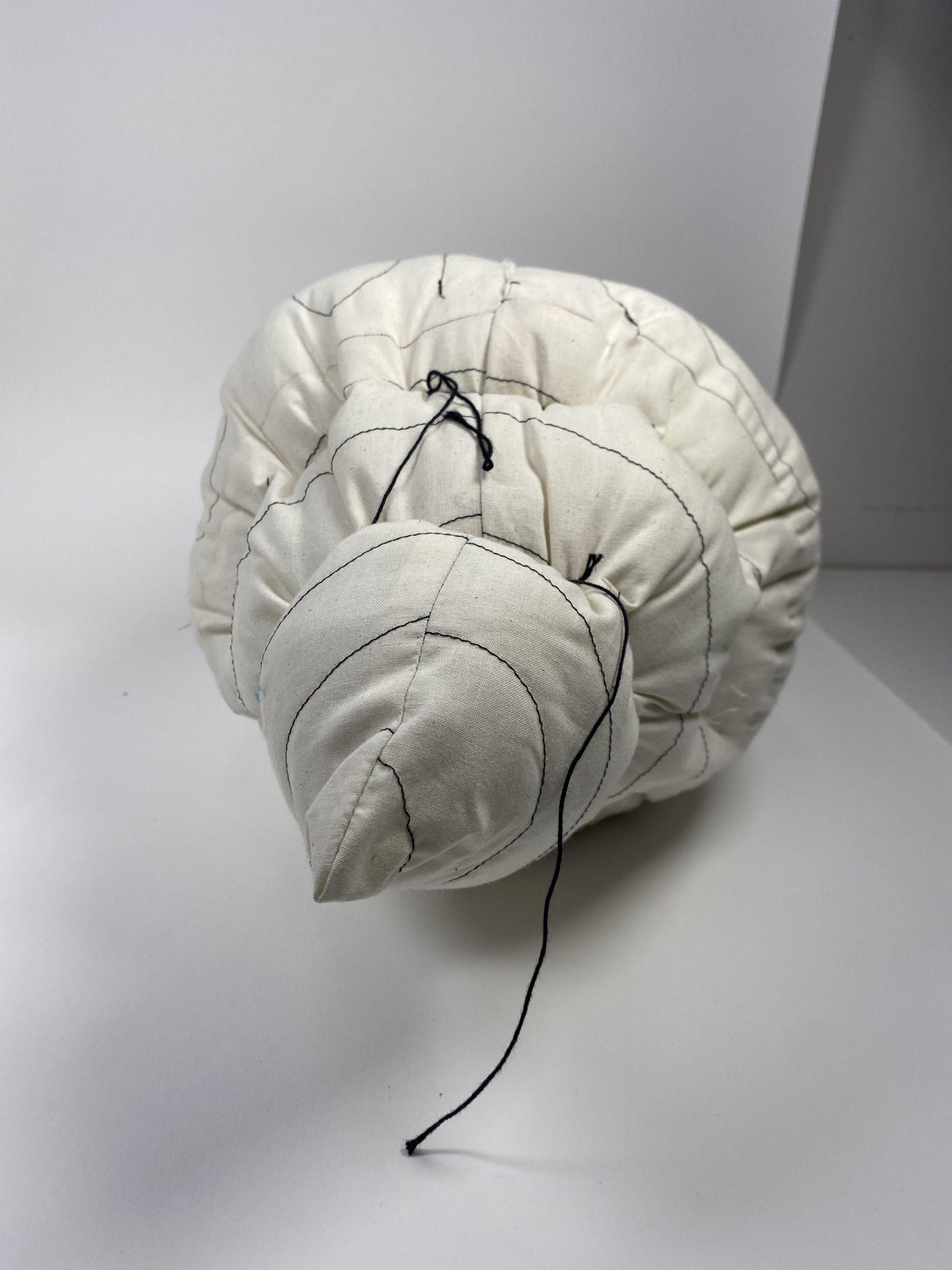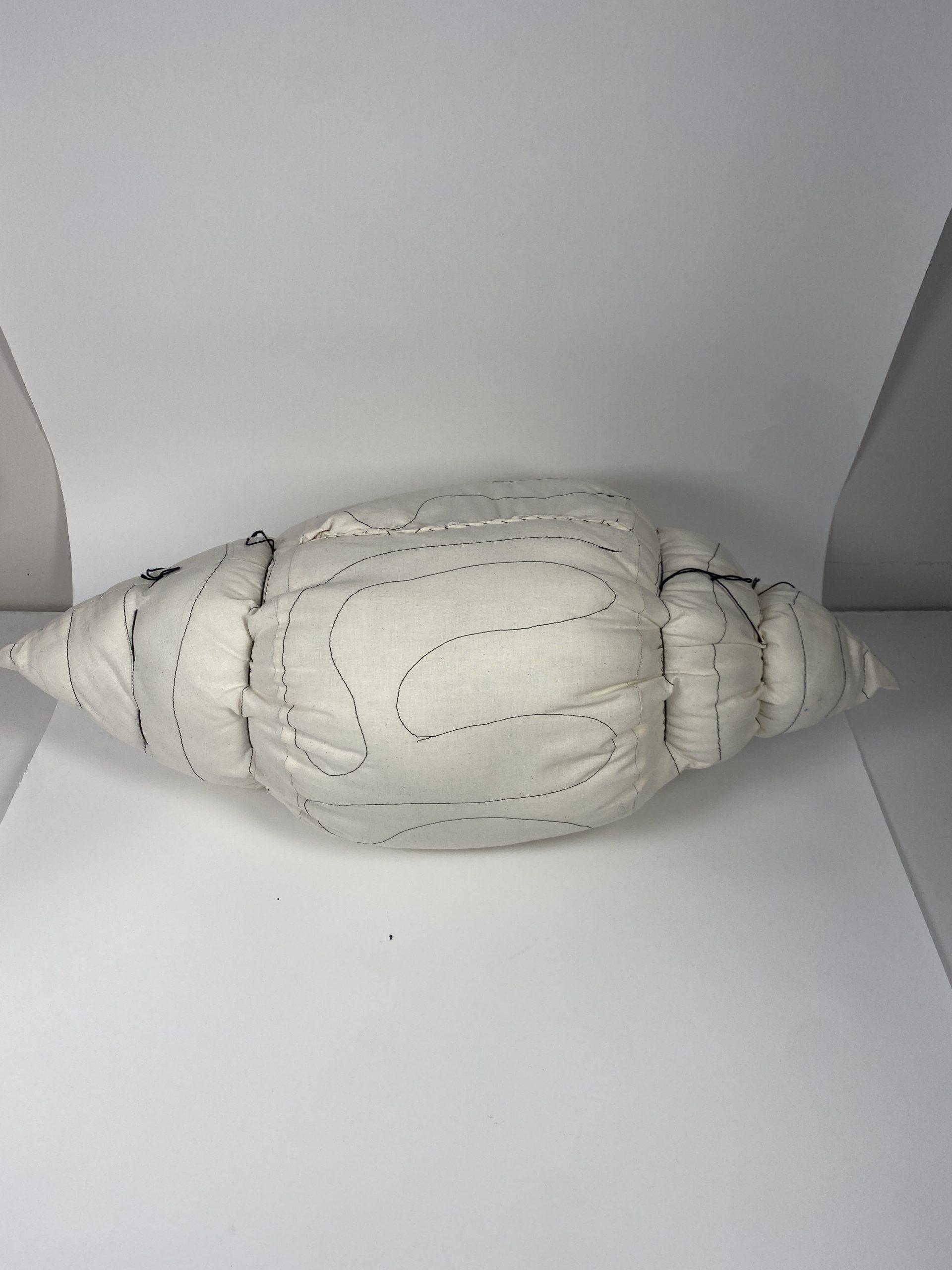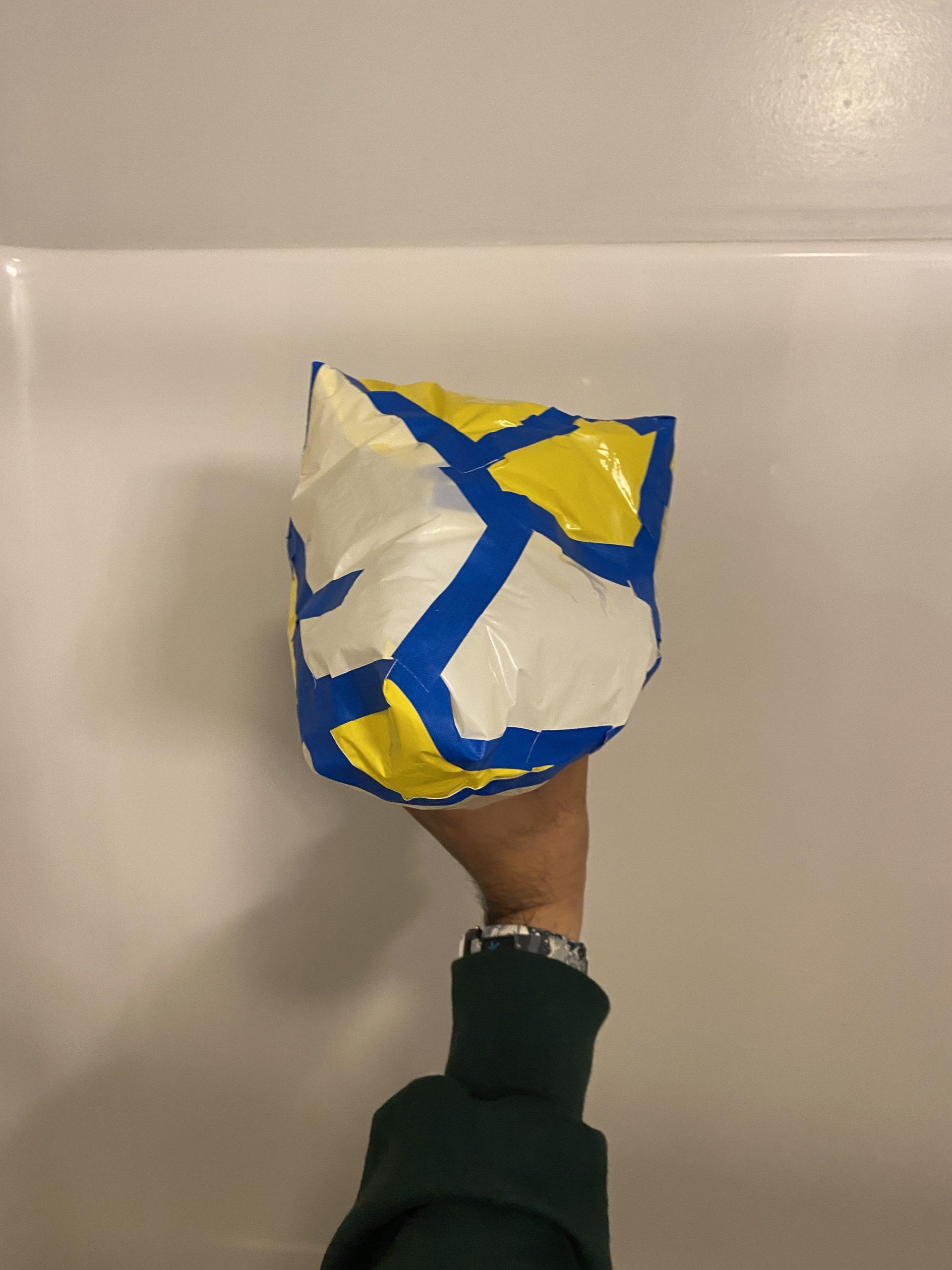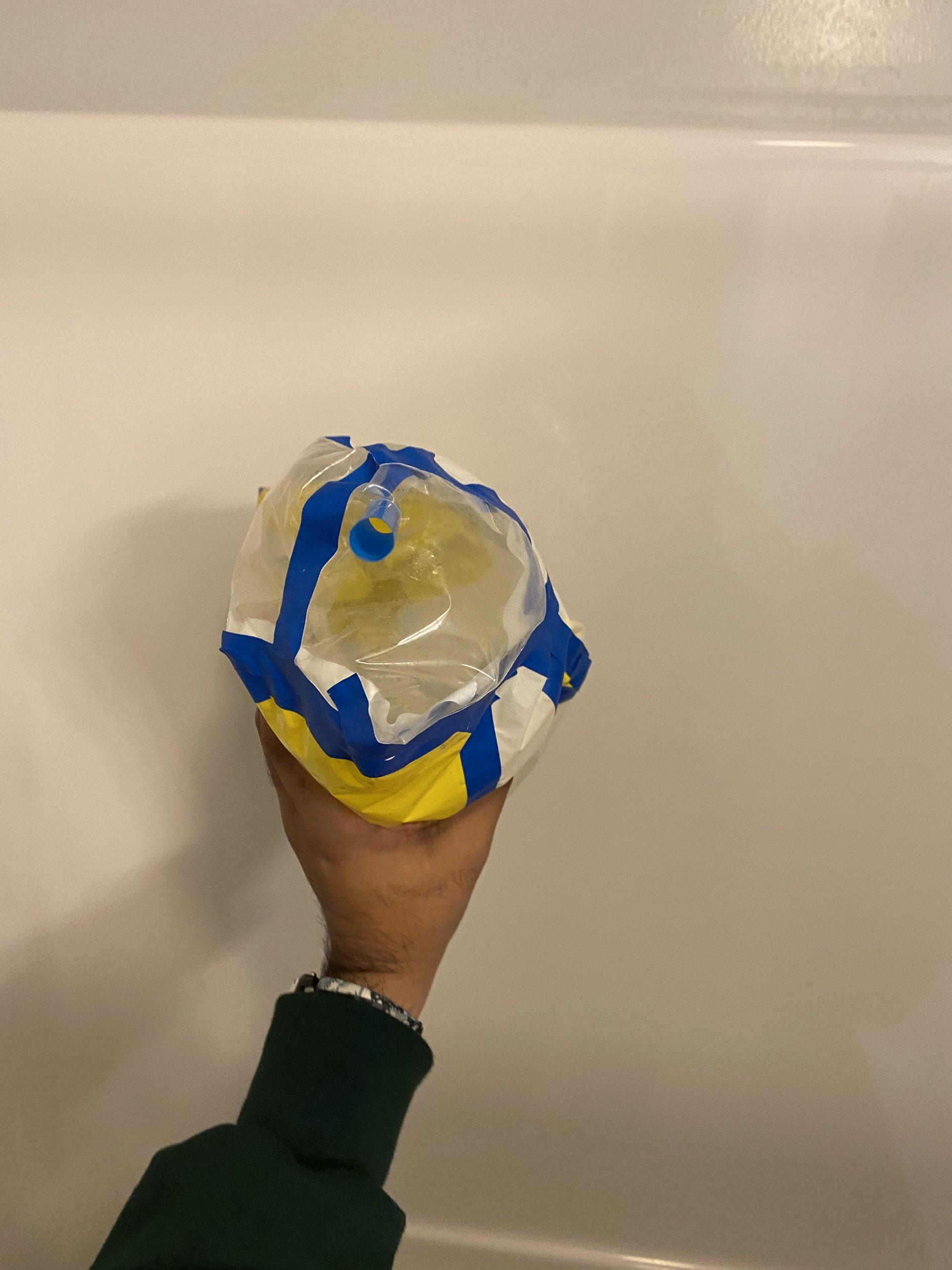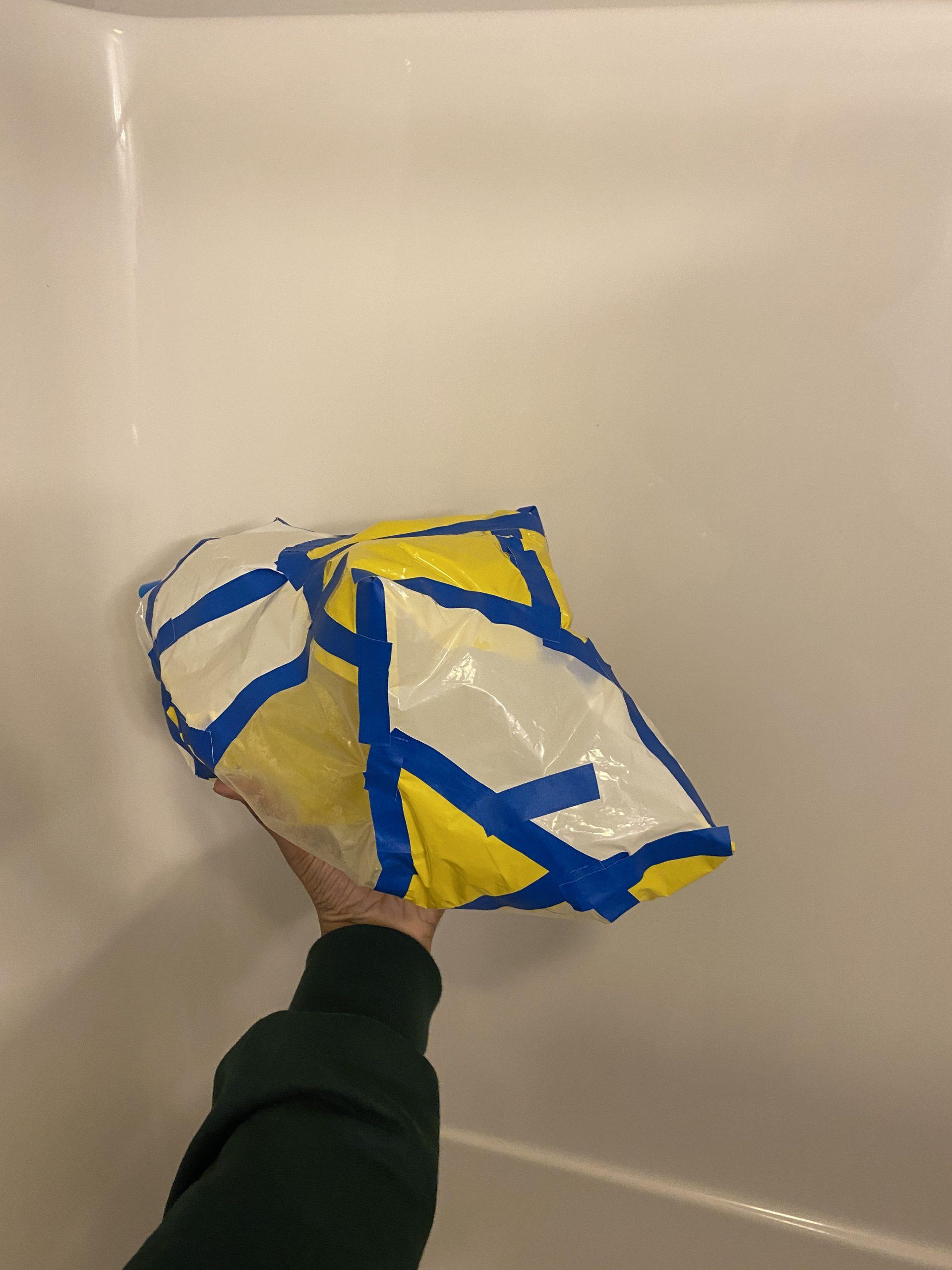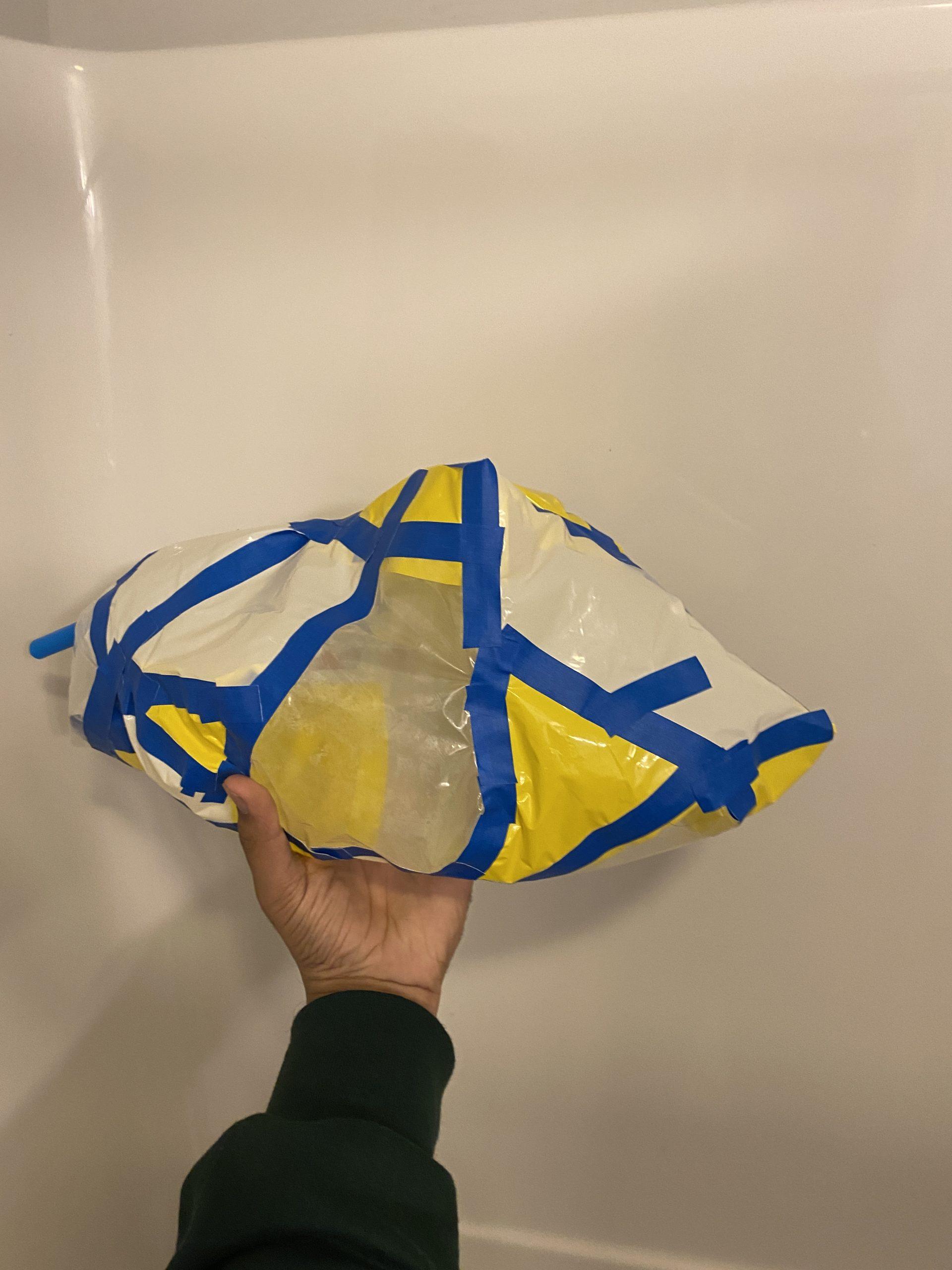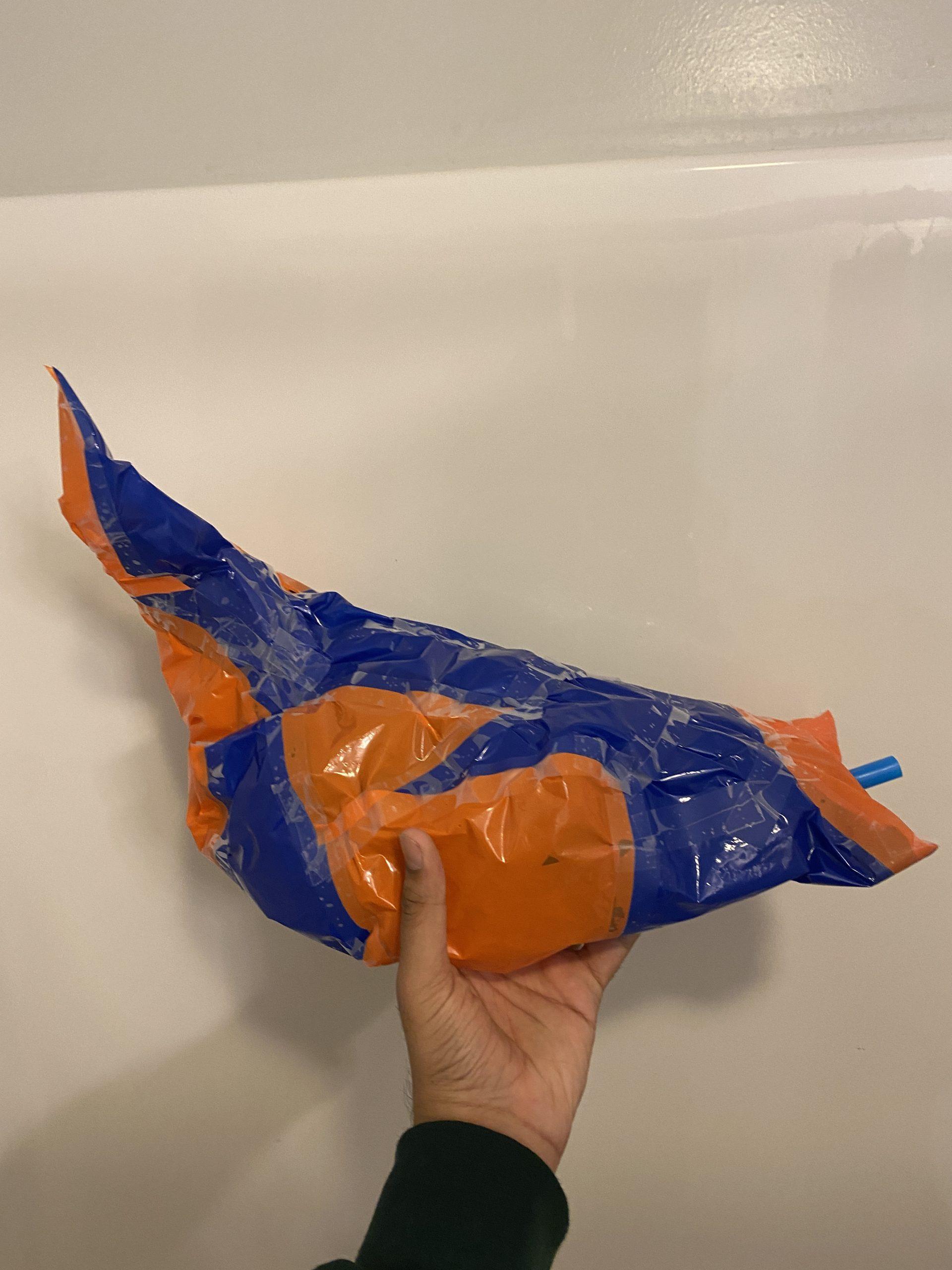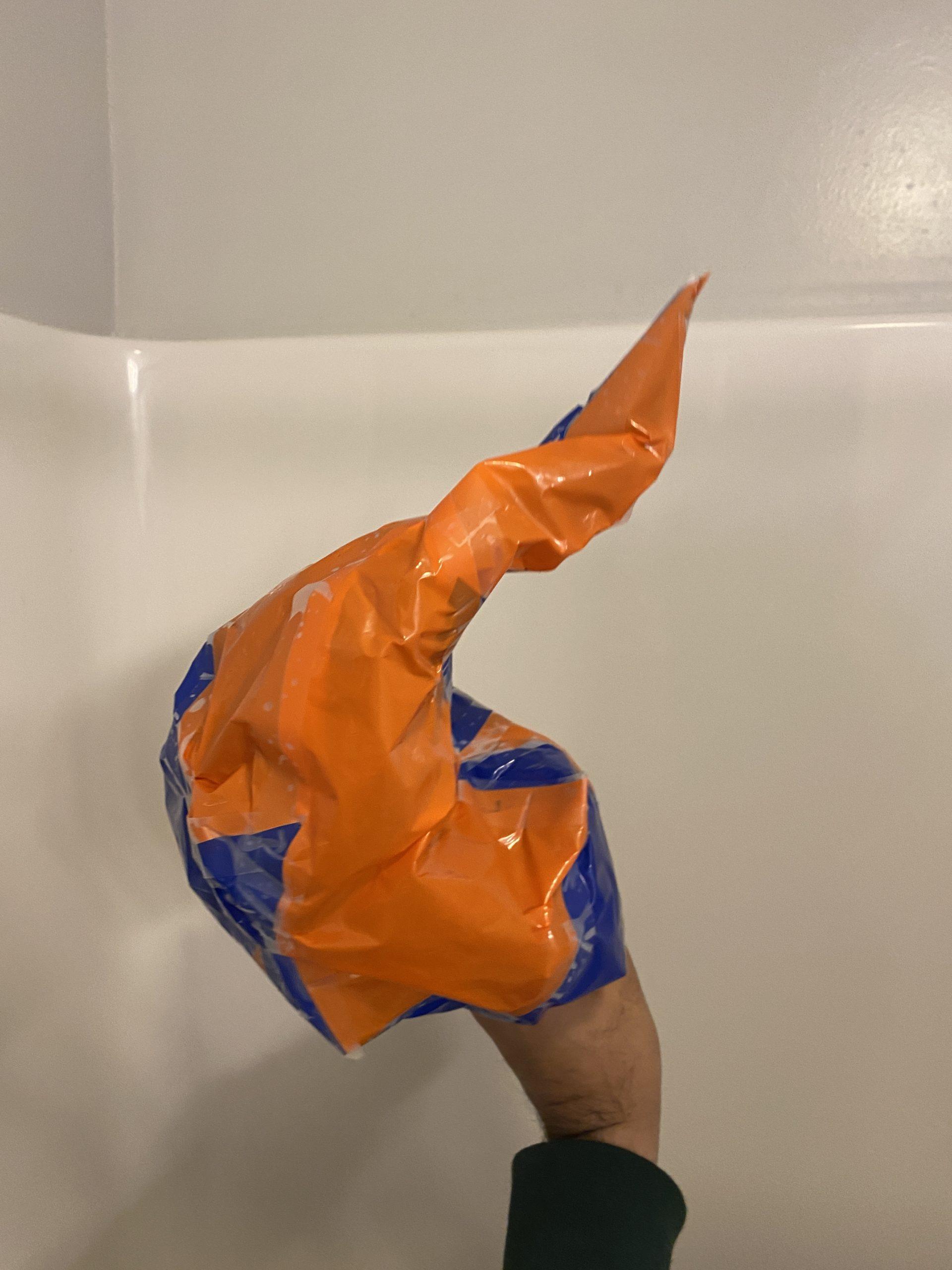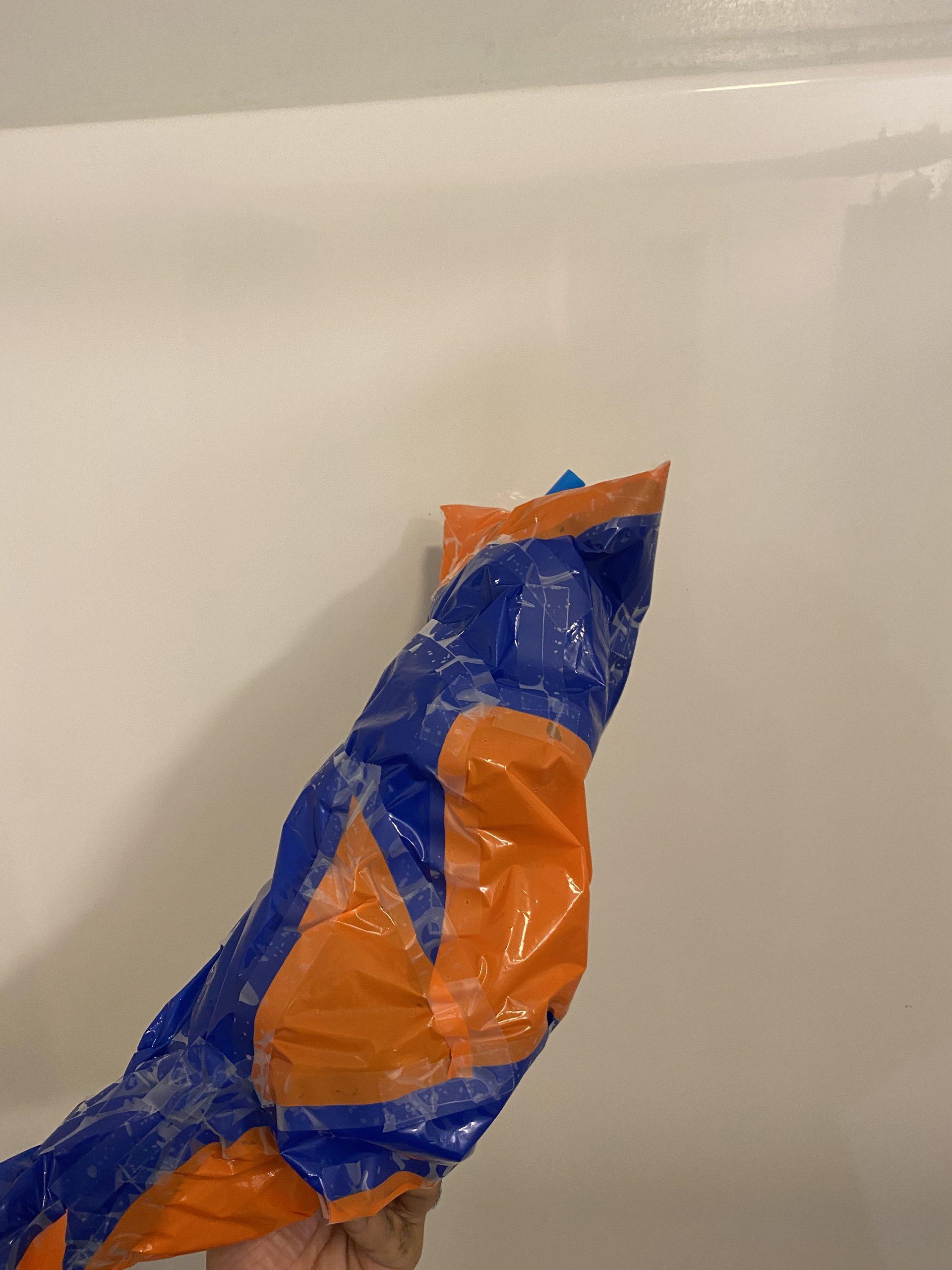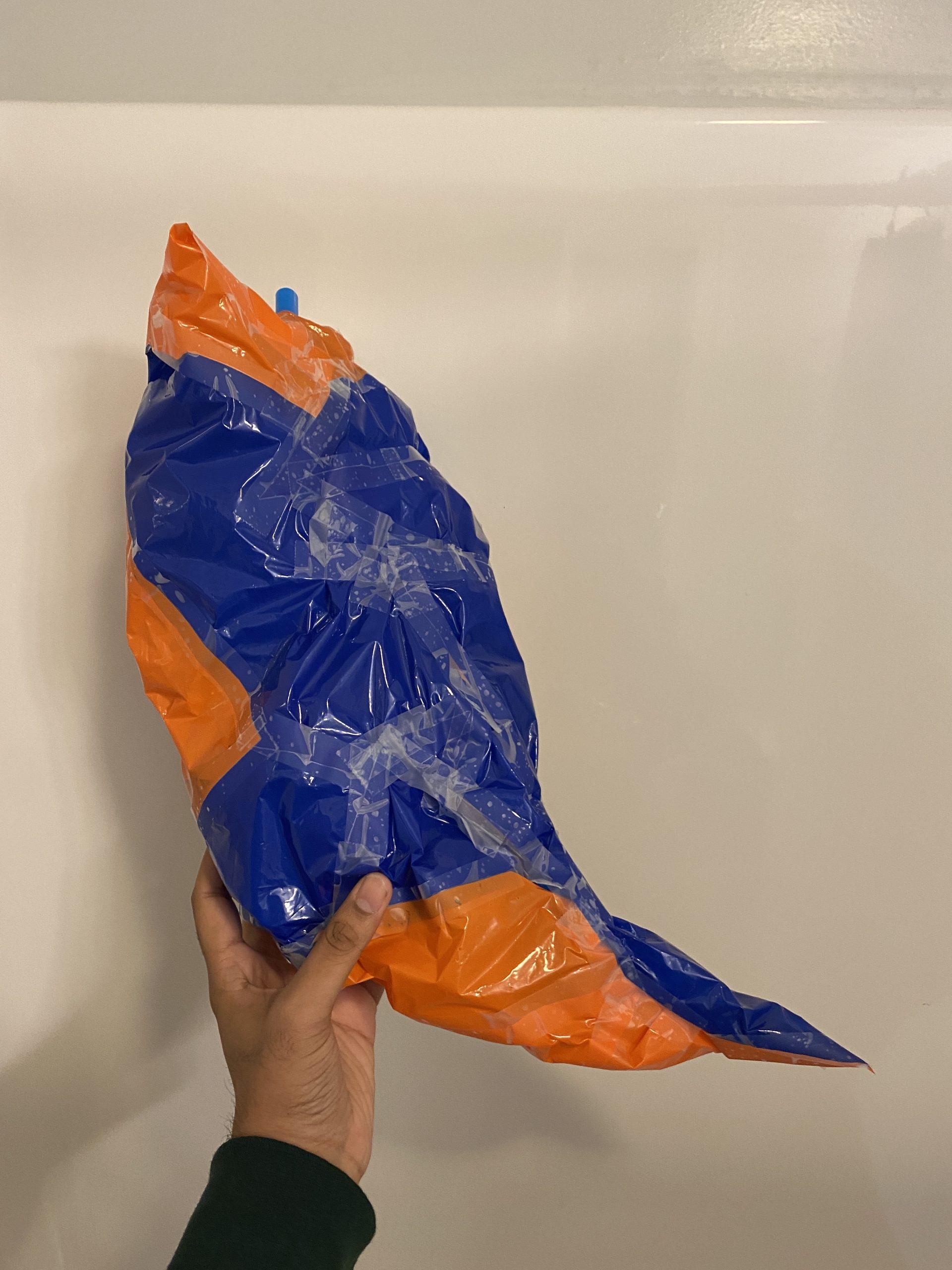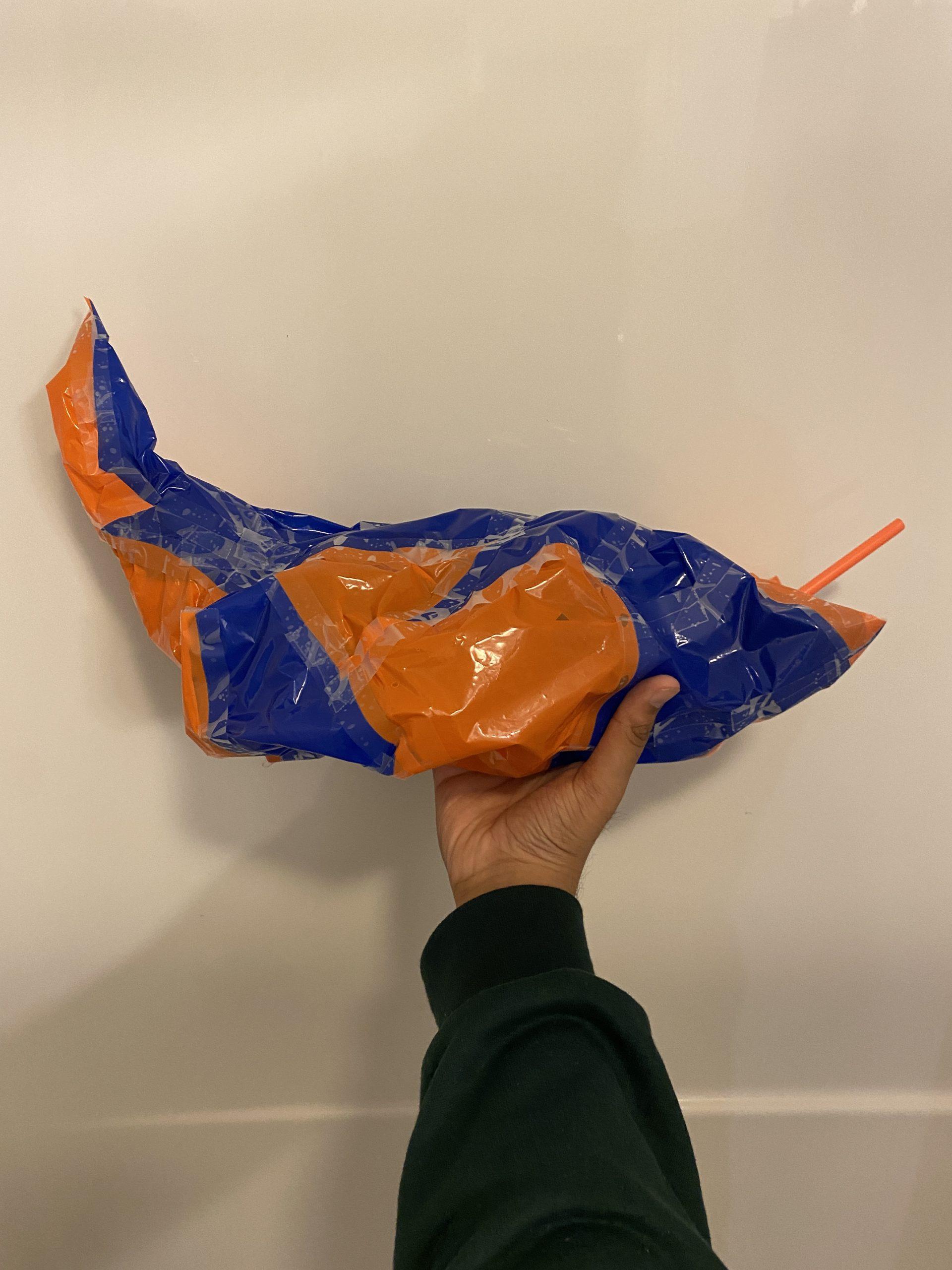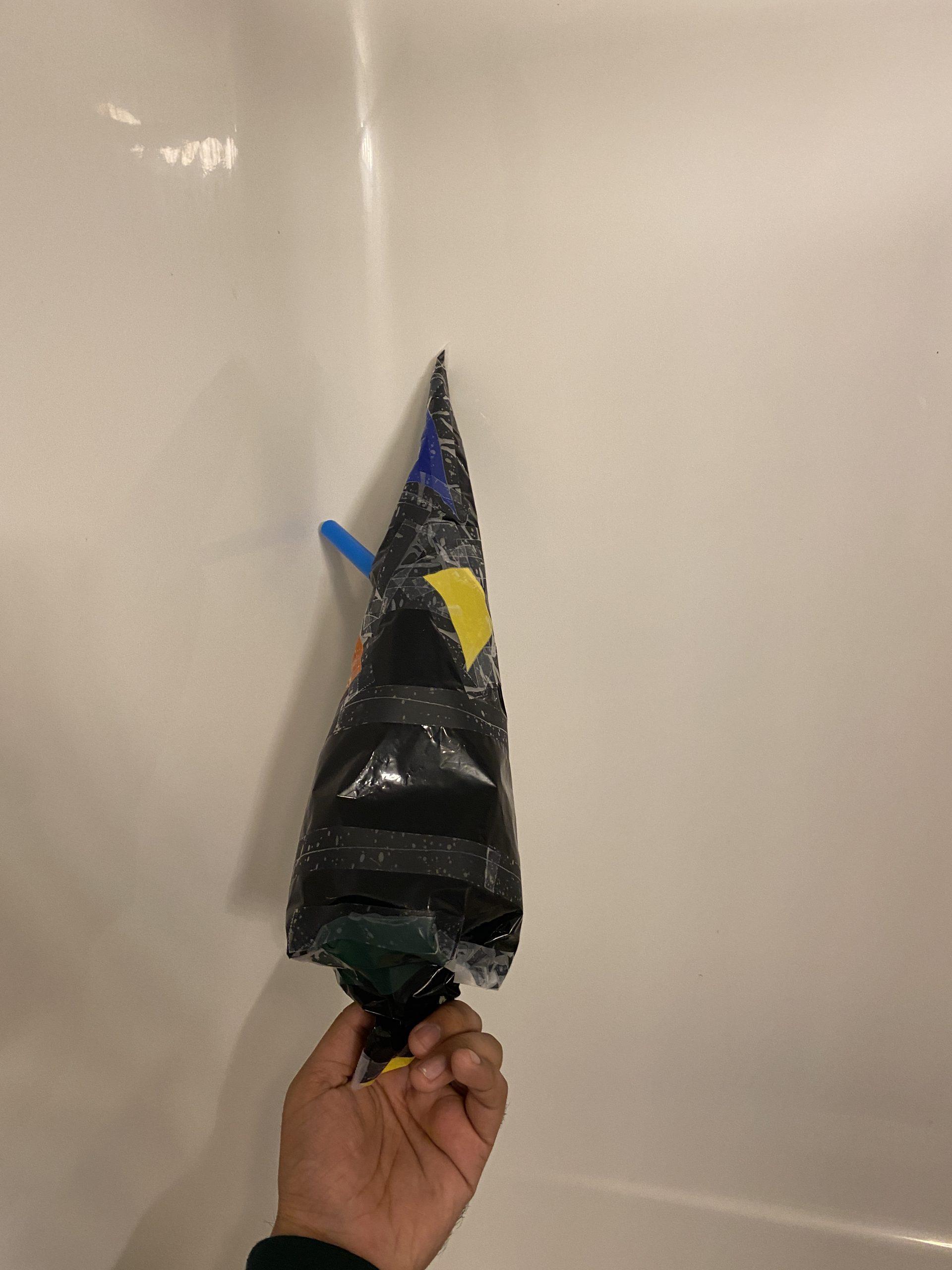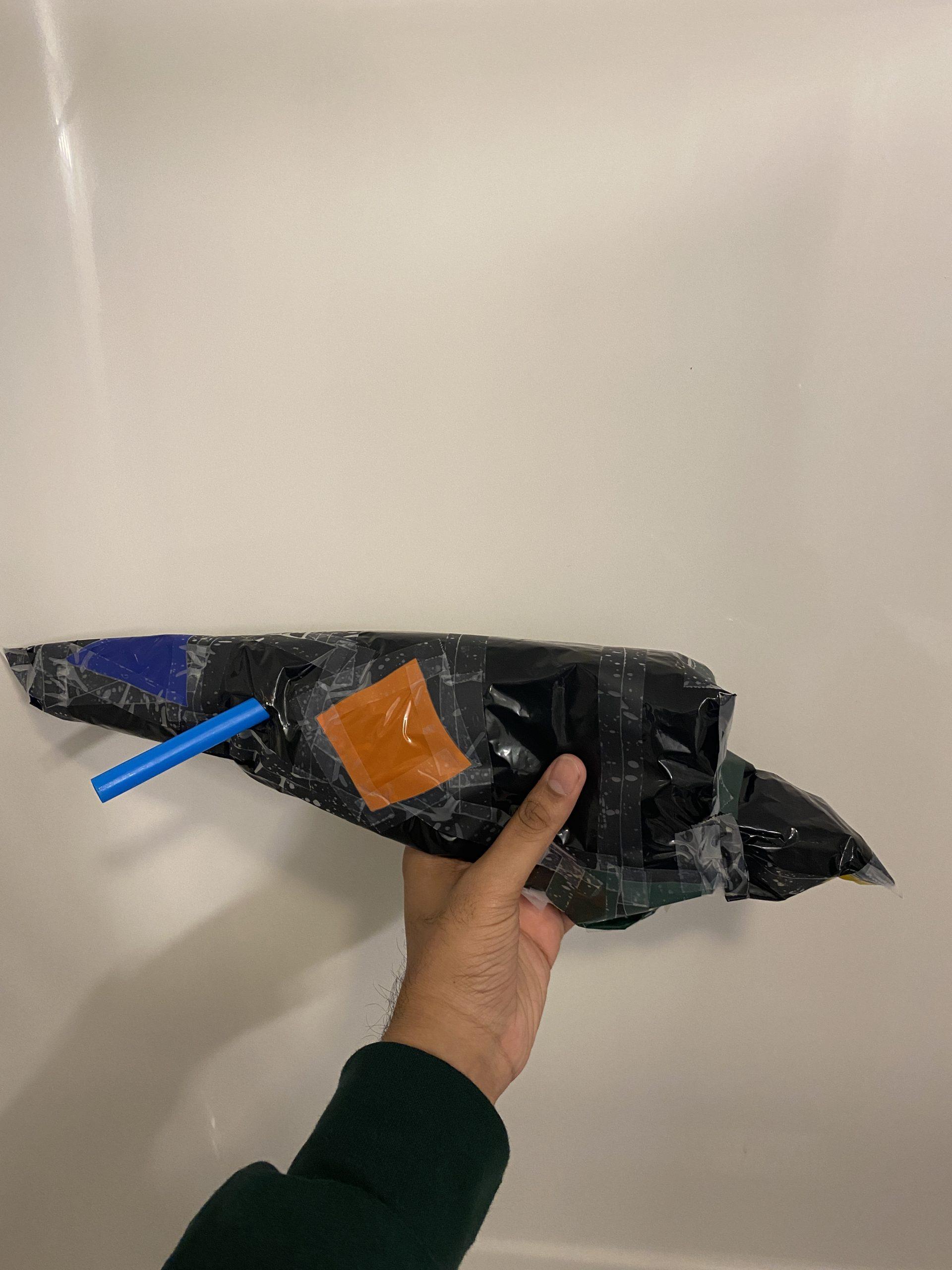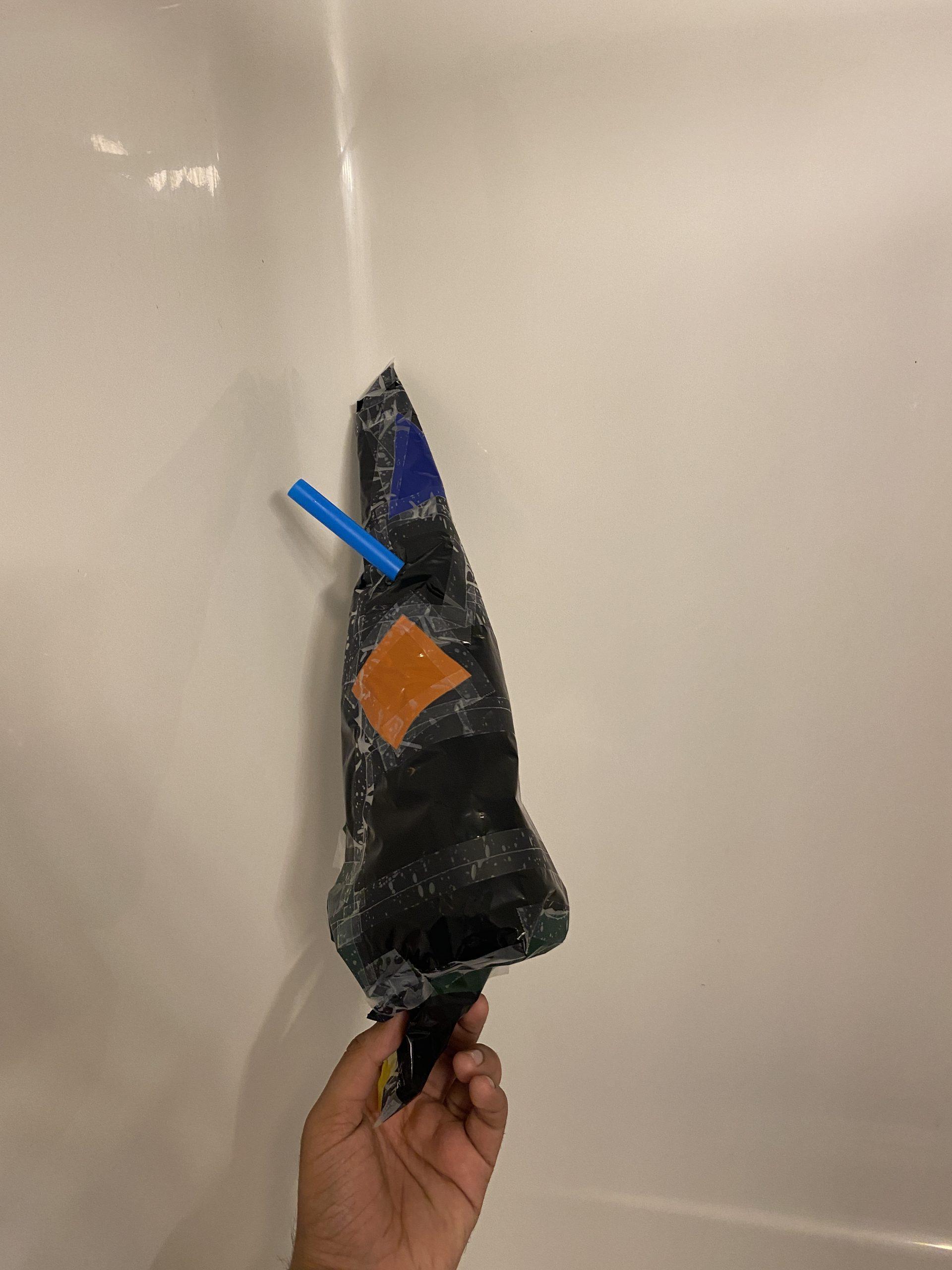I honestly was a bit nervous to start this assignment. As someone who is so used to assignments having rules and constraints to follow, having this assignment where quite the opposite is true forced me to think (or, not think) in ways in which I was not used to. Nevertheless, I thoroughly enjoyed being able simply sit down, cut plastic, tape it together, and blow it up and see what I made once I finally got into the groove of things.
For the first inflatable, I went in with absolutely zero direction and simply cut random shapes out of 3 plastic bags. Then, when I put it together, I tried to put them together in a way such that no piece touched a piece of a similar color, just to see what kind of visual effect that would create.
This piece almost resembled a really long fox head, with these 2 ears that seemed to poke out above the body fo the inflatable with a long snout coming out. I thought it was really interesting to see how various edges fit together, namely combining round edges and straight edges to create bends in the inflatable and experimenting with the how much I pulled the inflatable in a certain direction to adjust the tightness and size of it as I put the final pieces together, which seemed to add dimension and bumps to the inflatable.
For the second piece, I opted to use a different strategy when putting the pieces together. Rather than the last piece where each piece touched pieces of different colors, I instead put pieces of similar colors together to see how that could create a visual effect of more interesting forms being seen on the inflatable. I also tried to create more pointed edges to the inflatable by pulling the edges of the pieces more tightly to new pieces I taped on.
This inflatable looks like a lot of different things to me. From one angle, it looks like a cat sitting up, with 2 distinct ears and a tail. From another angle it almost looks like a fish swimming through water. I also ran out of the provided tape with the first inflatable so I had to use plain Scotch tape.
For the last inflatable, I decided to experiment with making a 2D design of the inflatable, and once I was pleased with it, folding and taping it immediately into 3D without adding a single piece.
The 2D design essentially looked like a flat Christmas tree, with a tall triangle and a rounded bottom. As I pulled everything to each other, I experimented with how to connect the edges. I ultimately decided on connecting them as if I folded the design in half vertically. It ultimately created this cone like object which seems to resemble a 3D Christmas tree. Honestly, I was pretty surprised with how this turned out – especially the fact that the 2D and 3D forms were much more similar visually that I thought they would be.
